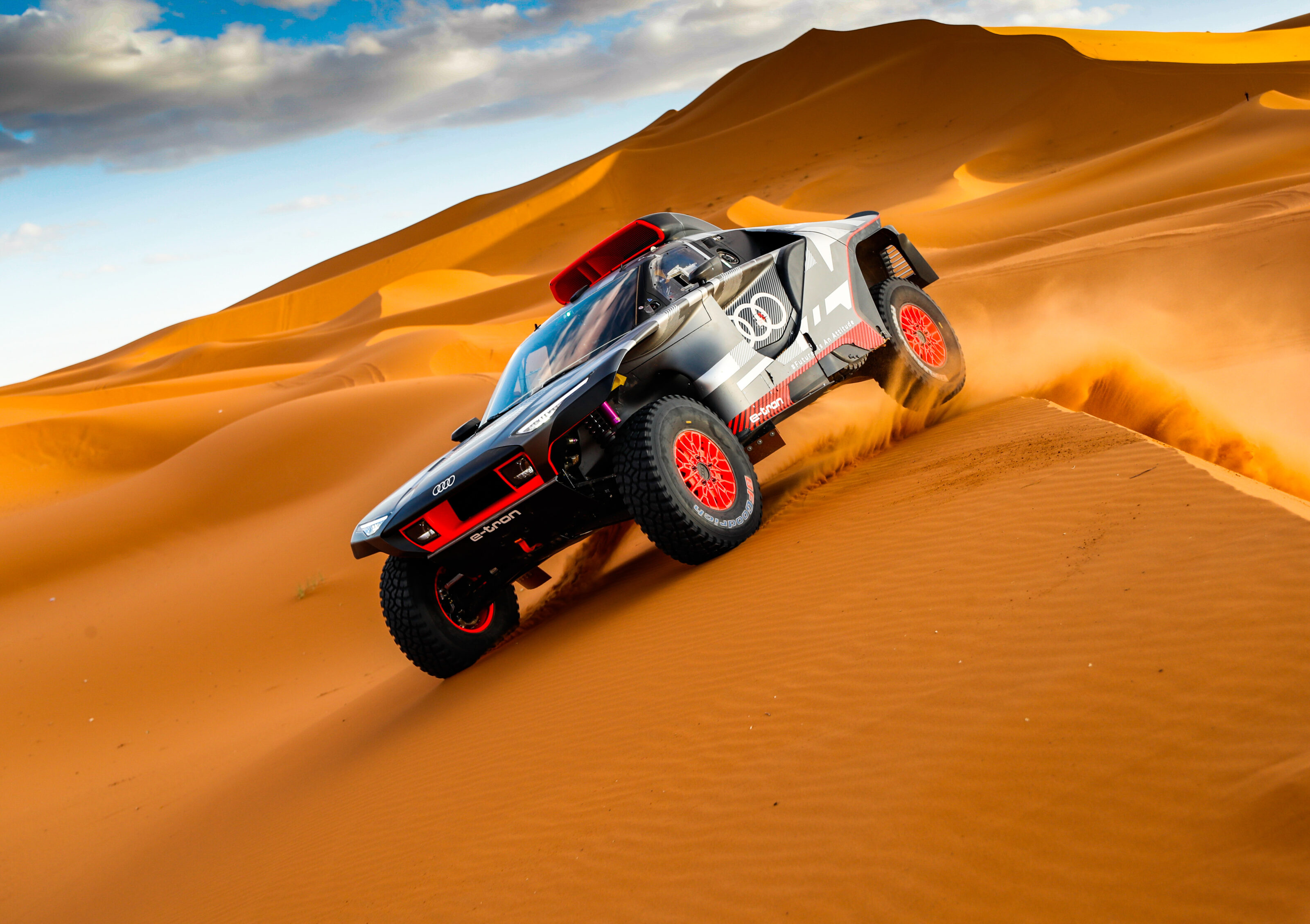When Markus Duesmann left BMW in 2018 to join Audi, he faced a two-year competition exclusion clause. This gave the fast-climbing top manager plenty of time to map out a brighter future for his new employer.
Having masterminded, among other assignments, the engineering division of the BMW Sauber F1 team, the motorsport aficionado still has racing blood running in his veins. Not surprisingly, the VW group’s R&D chief was determined to put his personal stamp on the Audi Motorsport agenda.
First, he angered BMW by pulling out of the DTM touring car championship without giving notice, then he snubbed his own people by unexpectedly withdrawing from Formula E. To everyone’s surprise, Audi instead signed a three-year deal with the Dakar Rally early this year.
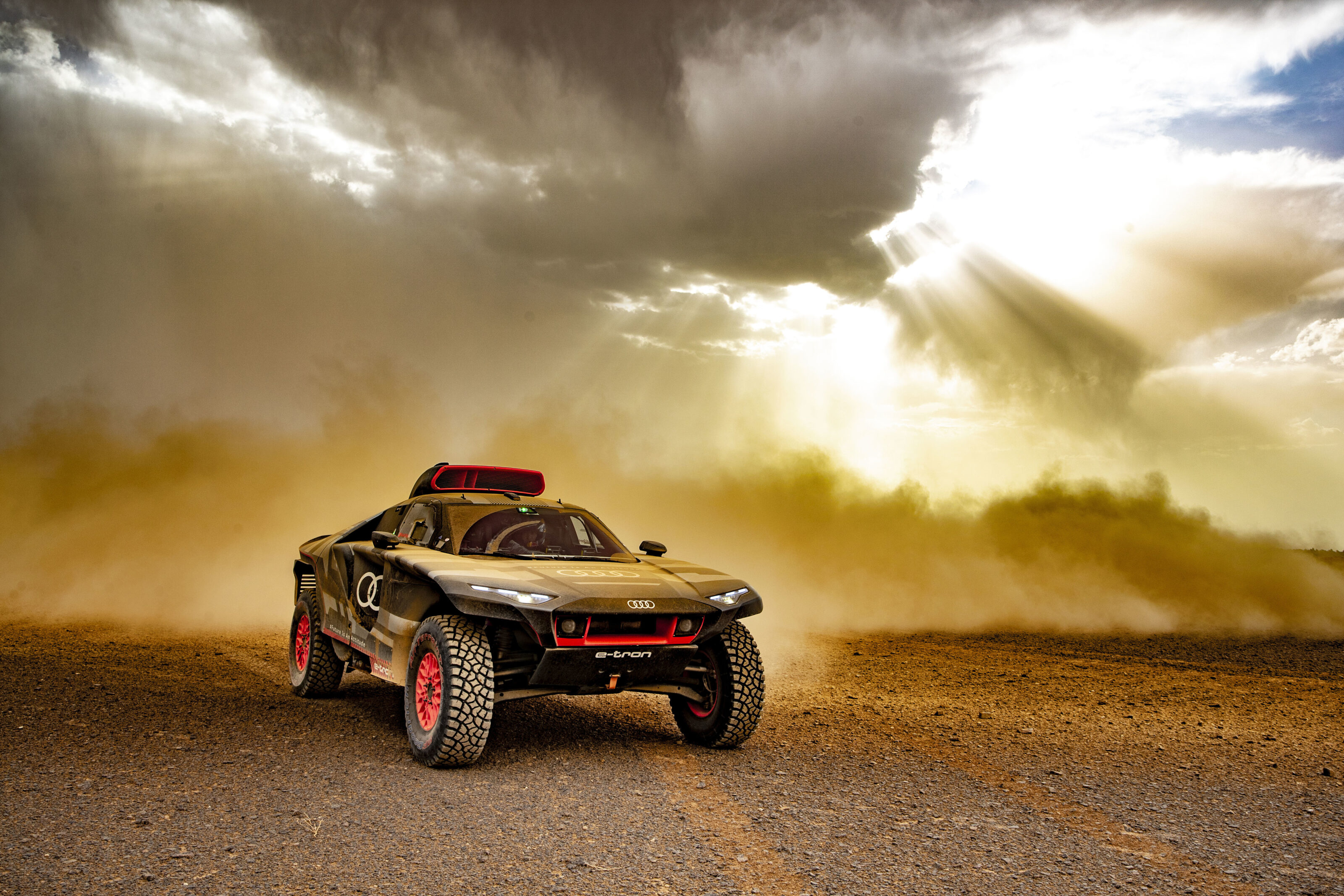
Why Dakar, you ask? Why indeed play an active part in destroying large areas of untouched nature with a bunch of inefficient purpose-built sand tanks? In a world where clean air has become a highly sought after commodity and at a point in history when everyone agrees that climate change needs to be curtailed, extreme off-roading is clearly the wrong mission and a message that may eventually turn against the brand.
According to those in the know, Duesmann wanted to honour a deal he had struck a couple of years ago with Sven Quandt, offspring of the major BMW stakeholder family, the man behind the Mini X-Raid venture and now also the founder of Q Motorsport, which is devoted to cross-country racing for the Audi nameplate.
Between Jan 2 and 14, 2022, three RS Q E-Trons prepared at the factory will take on similar machines fielded by Prodrive, Peugeot, X-Raid and Toyota‘s Gazoo Racing, to name only some of the biggest rivals. The logistics, backup and prep work are courtesy of Q Motorsport.
Why Dakar, you ask? According to those in the know, Duesman wanted to honour a deal he had struck with Sven Quandt, the man behind the Mini X-Raid venture.
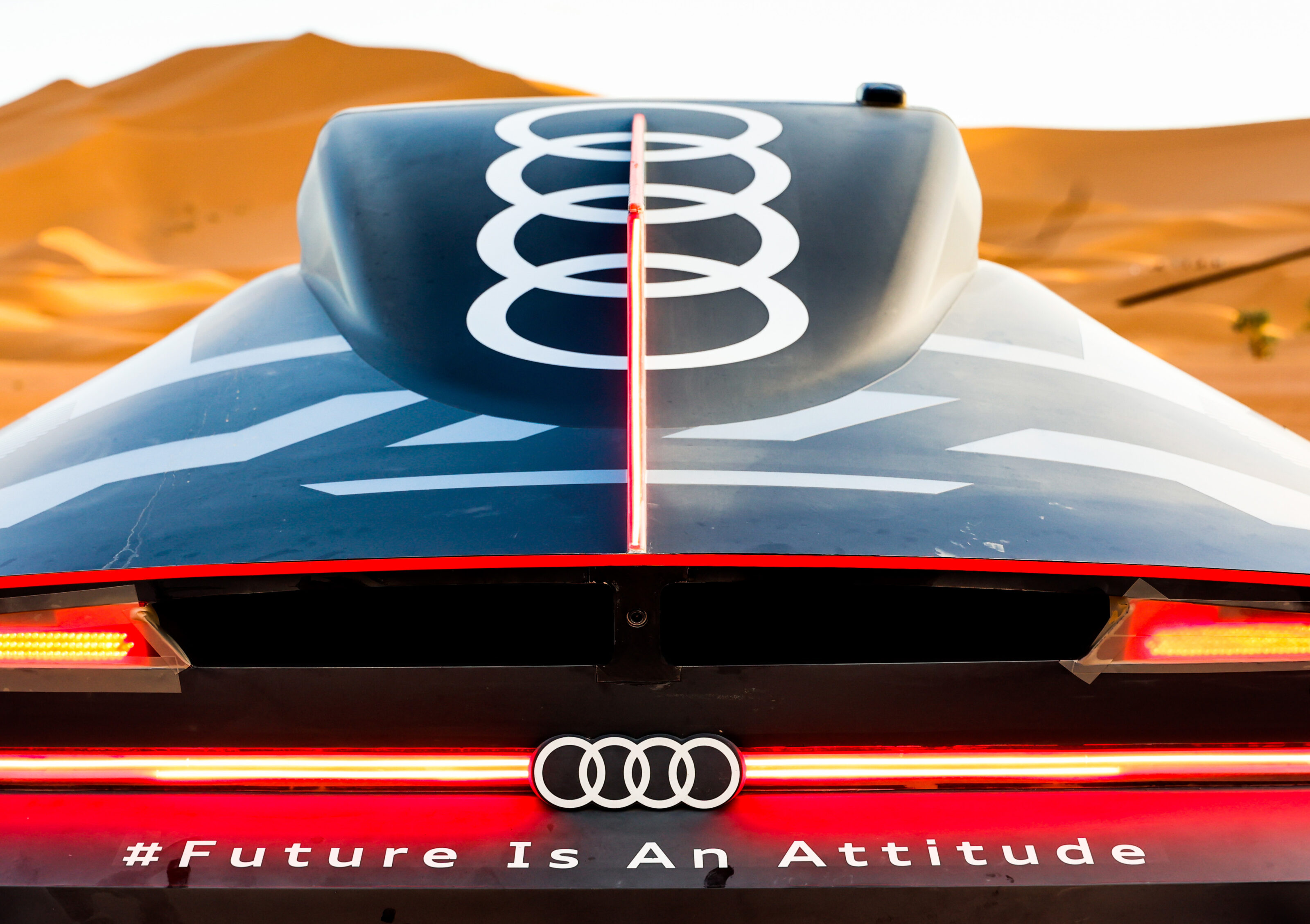
As indicated by the E-Tron moniker, the team from Neustadt/Danube, home of Audi Motorsport, is the sole entrant in the newly established TTE class created for vehicles with alternative drivetrains. Thanks to major revisions to the rulebook, the Bavarians conceived a unique type of high-performance hybrid that relies on a brawny petrol engine to charge the batteries on the move.
It’s an alternative layout for sure, but with a calculated fuel consumption of around 31.4 litres per 100 kilometres, the monster’s CO2 footprint is Yeti-size. Instead of calling a spade a spade, the 2.0-litre four is officially listed as an energy converter and directly drives the MGU FE57 generator adopted from Formula E. An evolution of the 433kW 2019/20 DTM engine, the so-called best-point unit has its sweet spot in the 4500-6000rpm range where between 142 and 224kW are on tap.
The same MGU FE57 motors redlined at 23,000rpm drive the front and rear wheels through a single-speed transmission with mechanical diff lock. The axle-to-axle torque split is masterminded by a virtual electronically controlled differential. The maximum charging power of the 52kWh high-voltage lithium-ion battery is 220kW. The combined peak output available for a limited period of time is 507kW, the continuous 24/7 rating is a more modest 298kW.
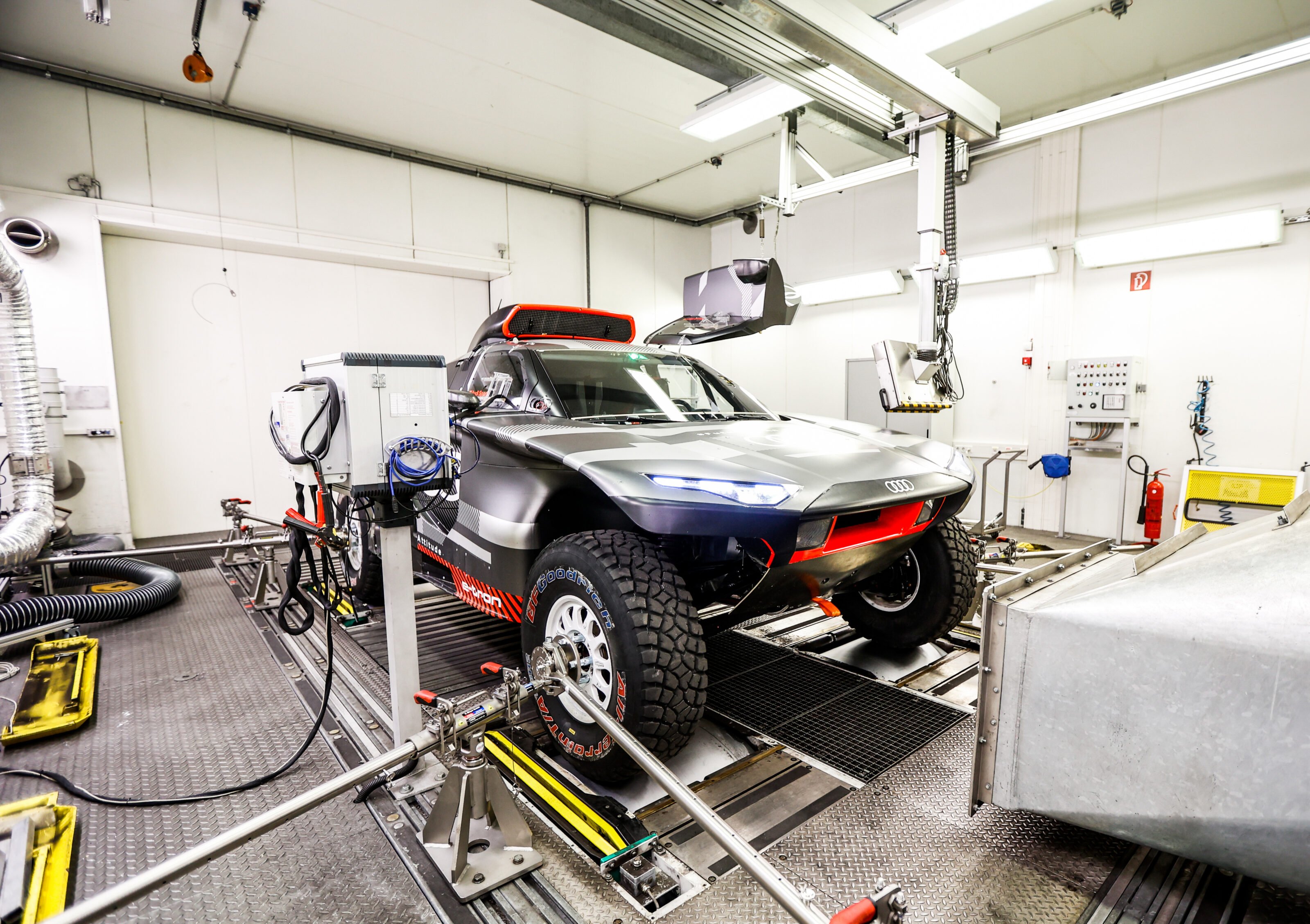
The 800-volt battery pack and the full 295-litre fuel tank each weigh a little over 300kg. Add 105kg for the e-motors and 100kg for the TFSI engine, and the 2000kg minimum weight target leaves less than 1200kilos for the carbonfibre body, tubular steel frame, aluminium double-wishbone suspension with KW dampers, six cooling circuits, Bosch power electronics and Brembo steel brakes with on-demand balance and energy regeneration.
Top speed is restricted by regulation to 170km/h, the quoted average 0-100km/h acceleration time on sand and loose gravel is 4.5sec. After 4800 test kilometres on Moroccon soil (including one 800km special stage driven at race pace), the battery remains the one big unknown.
Freshly put together to Audi specification by a bunch of specialised suppliers and controlled by a Bosch PDM32 black box, the scope of potential issues stretches from premature degradation to cell chemistry hiccups. While the petrol engine is cooled down by its own high-temperature water cycle, the 13 battery modules and the three motors are kept within a healthy operating window by a joint low-temperature loop. Although the 3458 pouch cells are packaged deep and low inside the vehicle’s belly, quick access is guaranteed in case one or more modules need replacing.
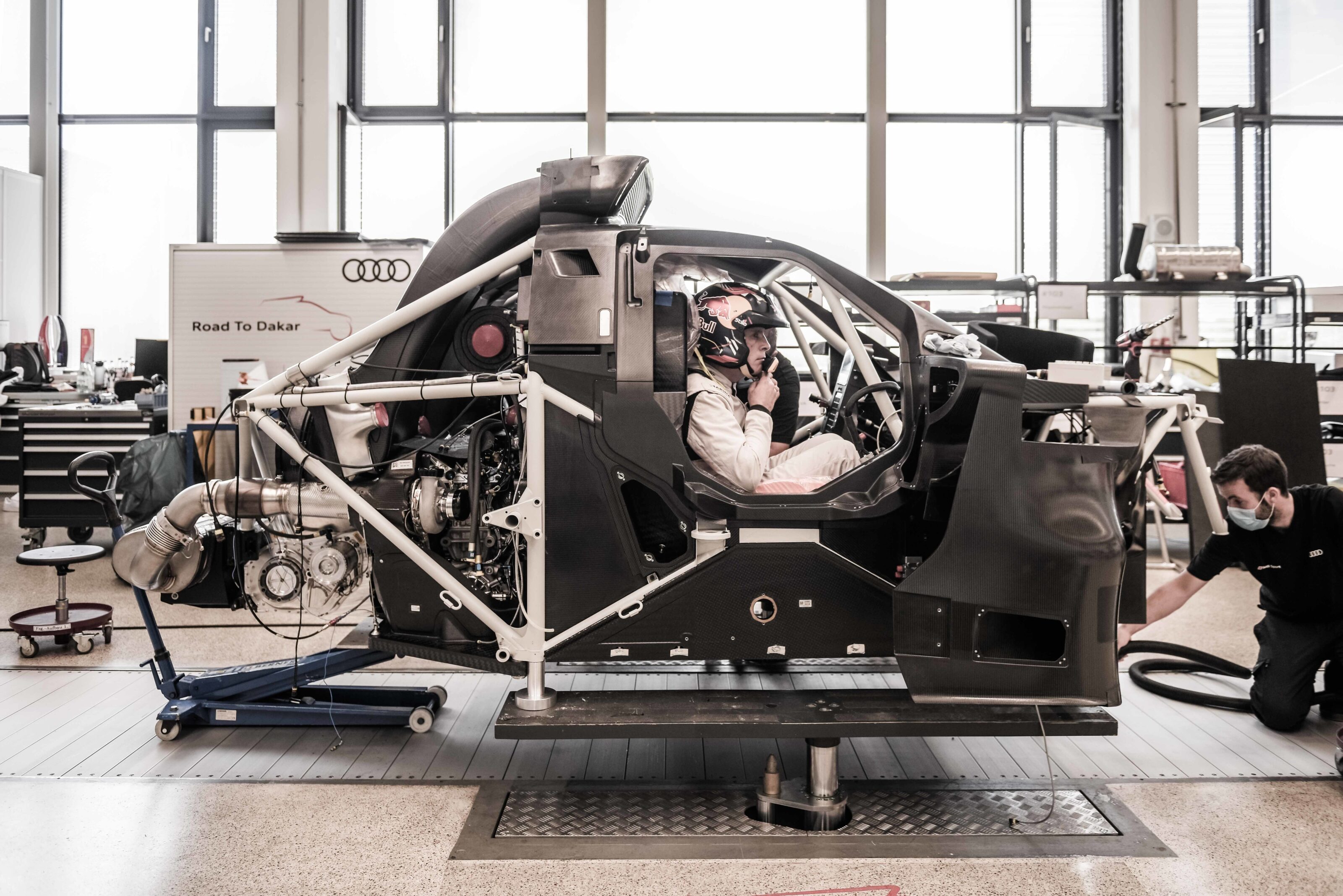
The sombre black cockpit relays the naked charm of an armoured scout vehicle ready to go on the prowl. Driver and passenger sit high up in narrow cubicles padded to measure. The windscreen is quite narrow yet reasonably tall but the side windows are more like rectangular upright periscopes, and the rear view is confined to a tiny reversing camera. The instrument panel itself is boxy, protruding and stuffed seemingly at random with different sorts of switches, buttons, displays and lights.
When you glance over the steering wheel onto the bonnet, the lower part of the frame is filled by half a black ping-pong table that only needs Eleanor the Flying Lady to pass for the Rolls-Royce Cullinan’s rough brother. From the outside, however, the eye-catching war livery includes a huge roof-mounted ram air intake device, bright red wheels shod with 17-inch BF Goodrich tyres and a wild concoction of slats, wings, aprons and protective panels.
The top speed is restricted by regulation to 170km/h, the quoted average 0-100km/h acceleration time on sand and loose gravel is 4.5sec.
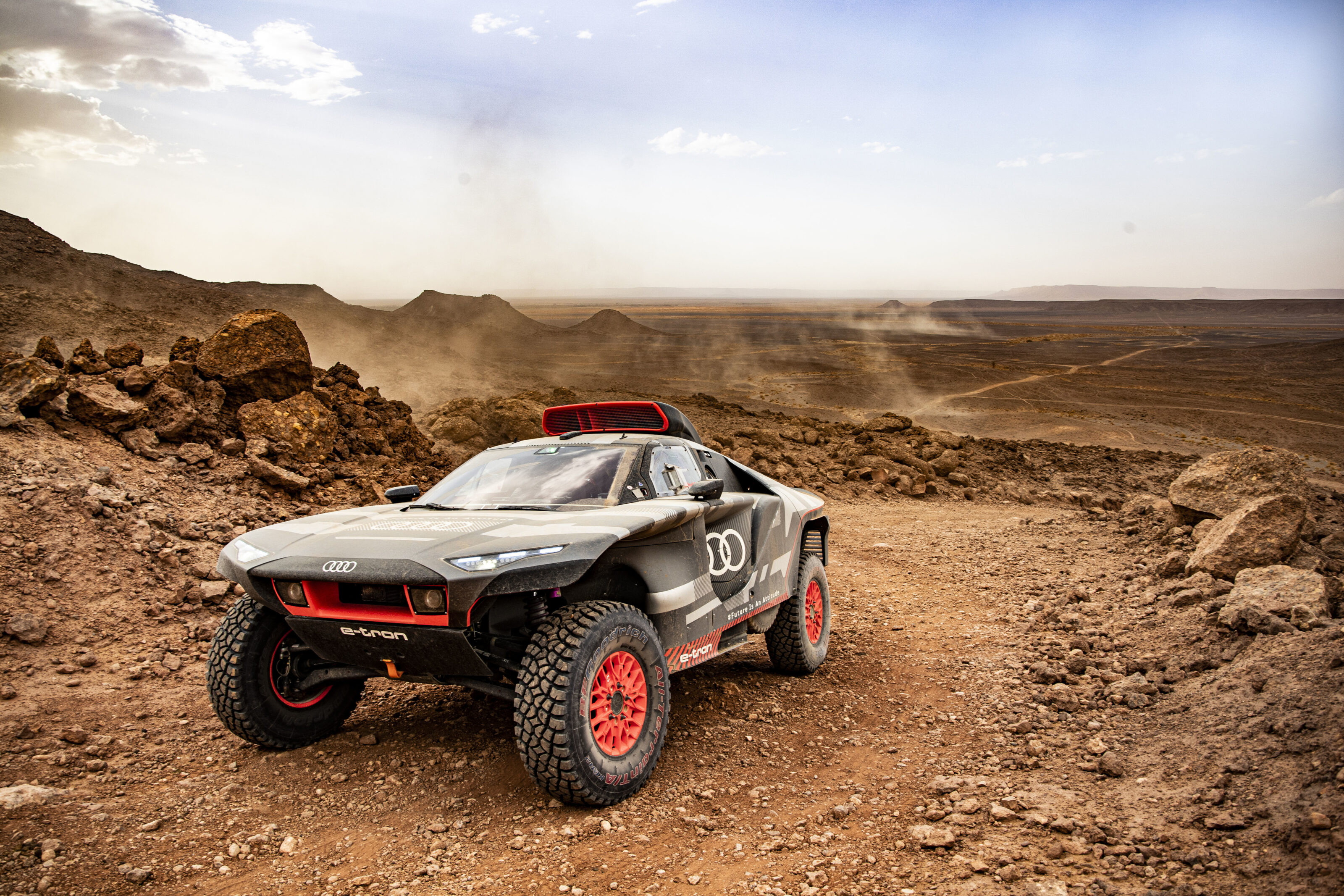
The cross-country rally car from Ingolstadt is as wide as a school bus (2300mm), almost as tall as a Mercedes G-class (1950mm) yet barely longer than the first 1980 Ur-Quattro coupé (4500mm). Matching these extreme dimensions is the yawning front ground clearance sized right for stray baby camels, the razor-blade lateral and underbody airflow wedges, the stacked multiple-vent triple-deck rear end and the almost cartoon-like elastic daddy long legs wheel travel.
While the gas-pressure shock absorbers are manually adjustable, the remaining chassis hardware and software is fixed. The same goes for the electro-hydraulic power steering. The brake balance and the torque split can be tweaked via toggles in the centre console.
The RS Q E-Tron may be an engineering masterpiece, it may win all three Dakar events it is destined to compete in and it may even embody certain forward-pointing elements that make it into volume production. But as a multi-million-dollar project signed off by a car-maker that has promised to turn the blue planet into a better place, this oddball vehicle is just another result of misdirected effort and money.
We recommend
-
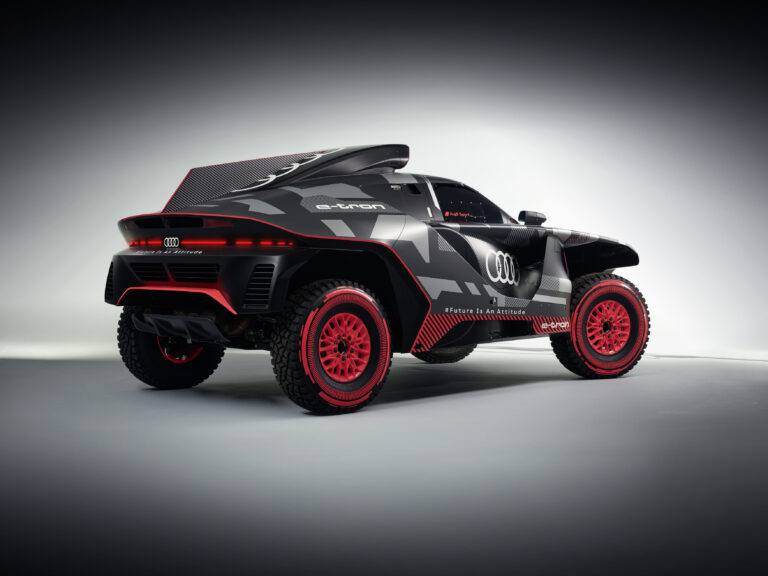 News
NewsAudi unveils its RS Q E-Tron Dakar beast
Here’s our first look at Audi’s Dakar-attacking petrol-electric racer
-
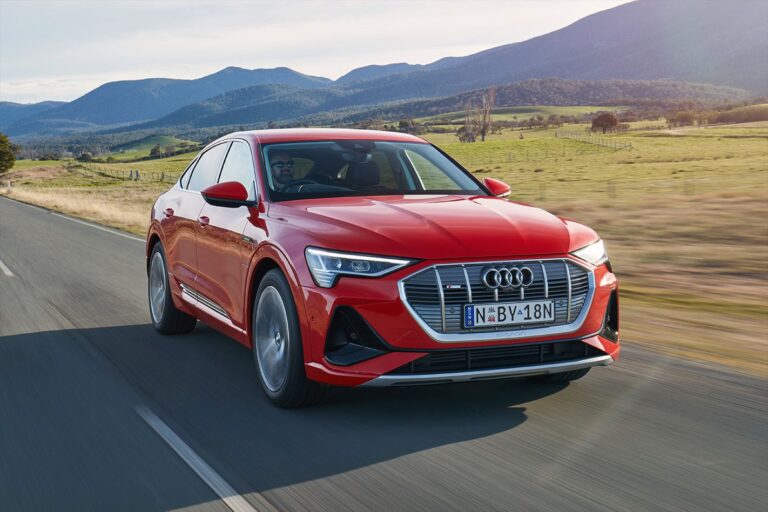 Reviews
ReviewsCan Audi’s e-tron EV SUV dethrone the EQC?
A German electric SUV war is about to begin. Open fire, Audi…
-
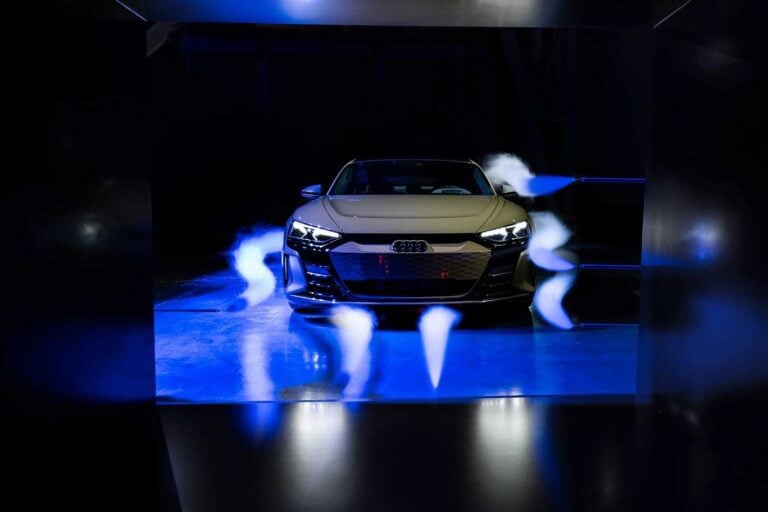 News
NewsLet's nerd out on the new Audi E-Tron GT with these facts
Curious about Audi's all-new EV? Here are some things to break the ice...

